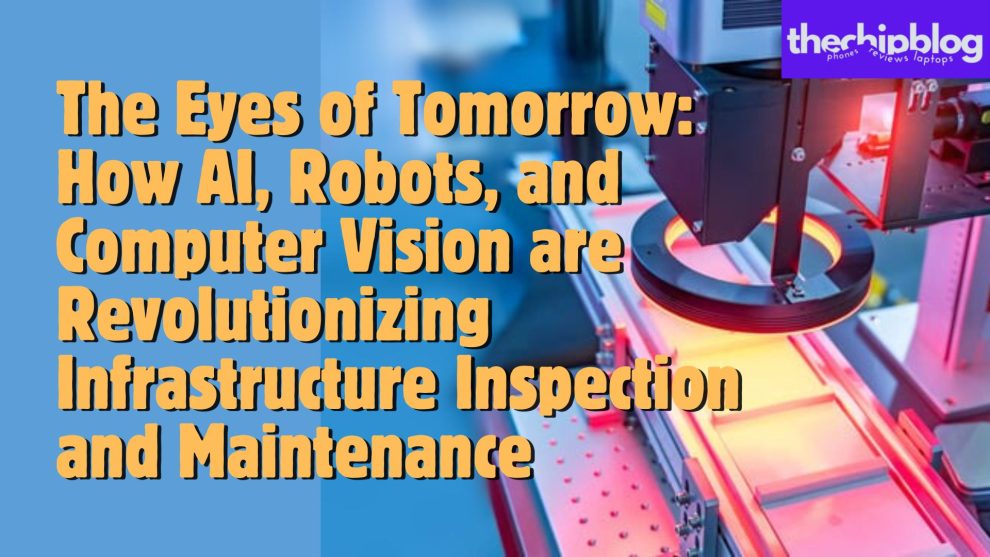Imagine a world where bridges whisper their weaknesses, pipelines cry out for repair, and roads silently signal their impending cracks. This futuristic scenario, once relegated to science fiction, is rapidly becoming a reality thanks to the powerful trio of Artificial Intelligence (AI), Robotics, and Computer Vision (CV).
For decades, the inspection and maintenance of our critical infrastructure – from bridges and dams to transportation networks and utilities – has been a labor-intensive, often dangerous, and sometimes error-prone process. Human inspectors brave precarious conditions, rely on subjective assessments, and face limitations in coverage and consistency.
But this is all changing. The convergence of AI, robotics, and CV is ushering in a new era of intelligent infrastructure management, one where automated systems collect data, analyze it with superhuman accuracy, and predict problems before they become catastrophes. Let’s delve into how these technologies are working together to transform this critical field:
Seeing the Unseen: The Power of Computer Vision
At the heart of this revolution lies computer vision. Imagine sophisticated cameras mounted on drones, robots, or even fixed points, capturing high-resolution images and videos of our infrastructure. These images are then fed into AI algorithms trained to recognize specific features, patterns, and anomalies.
By analyzing subtle cracks, corrosion patterns, misalignments, and even vegetation overgrowth, CV systems can identify potential issues with incredible accuracy. Think of a robotic inspector crawling through a dark and dusty pipeline, its cameras capturing minute cracks invisible to the human eye. Or a drone soaring over a vast bridge, its CV system scrutinizing every weld and rivet for signs of fatigue.
These are just a few examples of how CV is expanding our ability to see and assess infrastructure, uncovering hidden problems before they evolve into major failures.

Thinking Machines: AI Takes the Wheel
The captured data is not just passively observed; it’s actively analyzed by powerful AI algorithms. These algorithms, trained on vast datasets of images and inspection reports, can learn to identify and classify defects, assess their severity, and even predict their future development.
Imagine an AI system analyzing years of drone footage of a bridge, identifying a specific type of crack and predicting its growth rate based on environmental factors. This information, once unimaginable, allows for preventive maintenance, saving time, money, and potentially lives.
Furthermore, AI can go beyond simple analysis and even suggest repair strategies. By factoring in historical data, material properties, and environmental conditions, AI systems can recommend the most effective and cost-efficient repair solutions, optimizing maintenance procedures and maximizing resource allocation.
The Robots are Coming (to Help!)
But seeing and thinking aren’t enough; action is needed. That’s where robots come in. Imagine agile robots traversing treacherous terrain, navigating confined spaces, and manipulating tools with precision. These robots, equipped with CV and AI, can not only collect data but also perform repairs, automating tasks that were once deemed too dangerous or impractical for humans.
Think of a snake-like robot slithering inside a pipe, repairing leaks with laser welding. Or a team of robots autonomously patching cracks on a bridge, guided by AI-powered decision-making. These robots are not just replacing human workers; they are expanding the scope of what’s possible, reaching areas inaccessible to humans and completing tasks with superhuman accuracy and speed.
Benefits Beyond Imagination
The potential benefits of this technological convergence are vast:
- Improved safety: By removing humans from hazardous environments, these systems significantly reduce the risk of accidents and injuries.
- Enhanced efficiency: Automated data collection and analysis saves time and resources, allowing for more frequent and comprehensive inspections.
- Predictive maintenance: Identifying problems before they become critical failures reduces downtime, extends infrastructure lifespan, and minimizes economic losses.
- Cost savings: Optimizing maintenance strategies and automating tasks translates to significant cost reductions over time.
- Improved infrastructure resilience: Continuous monitoring and data-driven insights enable proactive interventions, leading to more resilient and reliable infrastructure.
Challenges and the Road Ahead
Of course, this technological revolution is not without its challenges. Concerns about job displacement, data privacy, and ethical considerations regarding AI decision-making need to be addressed carefully. Additionally, ensuring robust cybersecurity and overcoming technical hurdles in integrating these technologies with existing infrastructure are crucial steps.
However, the potential rewards far outweigh the challenges. By embracing innovation and responsibly integrating these technologies, we can usher in a new era of infrastructure management, one where safety, efficiency, and resilience are no longer aspirations but achievable realities.
















Add Comment